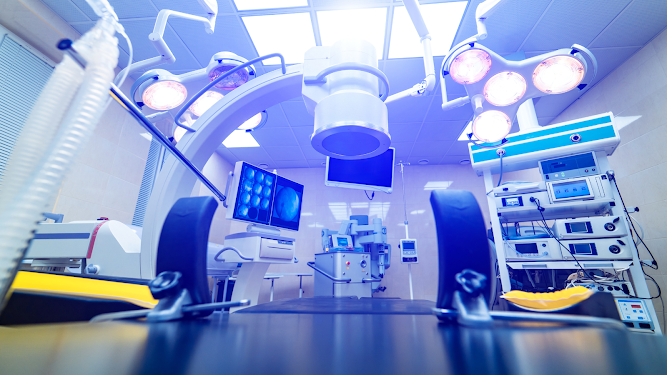Navigating Challenges in Medical Device Cleaning: Best Practices for Infection Control
 |
| Medical Device Cleaning |
Medical devices play a vital role in delivering quality healthcare to patients. From simple thermometers and stethoscopes to complex surgical equipment, these devices come in direct contact with patients' bodies during diagnosis and treatment. This makes cleaning and disinfection of medical devices an essential hospital practice to prevent transmission of healthcare-associated infections. However, maintaining high standards of medical device cleaning comes with its own set of challenges. This article discusses the importance of proper medical device cleaning procedures and highlights some of the current issues.
Why is Medical Device Cleaning Important?
Medical devices can become contaminated with microorganisms like bacteria and viruses during use on patients. Some of these pathogens may cause healthcare-associated infections if allowed to transfer to other patients through contaminated devices. Thorough cleaning and disinfection or sterilization is necessary to remove, kill, or deactivate potentially harmful microbes and prevent transmission of infections. Improper cleaning leaves residual organic matter and microbes on the devices which can survive and spread to the next patient. This puts patient safety at risk. Strict adherence to evidence-based cleaning protocols ensures devices are sufficiently cleaned before reuse on another patient.
Current Challenges in Medical Device Cleaning
While the importance of cleaning medical devices is well recognized, maintaining consistent standards across busy healthcare facilities poses practical difficulties:
Resource Constraints: Heavy patient loads and time pressures mean cleaning staff have limited time for meticulous cleaning of each device. Lack of dedicated cleaning rooms adds to workflow issues.
Complex Designs: Some advanced medical devices have intricate designs that trap debris, making thorough cleaning difficult without disassembly. Standard cleaning protocols do not always account for such complex designs.
Lack of Oversight: Monitoring adherence to cleaning protocols is challenging in large facilities with multiple cleaning staff Medical Device Cleaning. Lack of oversight can lead to lapses in protocol compliance.
Staff Training: Cleaning complex medical equipment requires specialized technical skills that cleaning staff may not always possess, increasing the risk of improper cleaning techniques. High staff turnover hampers consistent training.
Validation Challenges: It is difficult to visually or microbiologically validate the cleanliness of medical devices after cleaning. Residual bioburden is not always detectable to the naked eye.
These real-world pressures on healthcare facilities highlight the need for optimized cleaning protocols, staff training, oversight mechanisms, and validation techniques to consistently meet necessary standards of medical device cleanliness.
Adopting Best Practices for Medical Device Cleaning
To address current challenges, healthcare organizations must adopt evidence-based best practices and quality control measures:
Standardized Protocols: Detailed, device-specific standard operating procedures for cleaning, disinfection and inspection ensure uniform practices. Protocols should account for complex device designs.
Technical Training: Regular competency-based training empowers cleaning staff to efficiently and properly clean all equipment, regardless of complexity. Manufacturers must provide detailed cleaning instructions.
Dedicated Cleaning Areas: Adequately sized, well-equipped, and separate cleaning rooms optimize workflow and prevent cross-contamination during cleaning.
Supervision and Audit: Cleaning managers conducting periodic audits and staff supervision aid protocol compliance. Non-conformities must be addressed promptly.
Equipment Modification: Device designs should facilitate cleaning without damage or need for disassembly if possible.
Bioburden Testing: Routine microbiological monitoring after cleaning verifies cleaning effectiveness. ATP bioluminescence offers a rapid validation alternative.
Documentation and Traceability: Cleaning records provide evidence of adherence and enable effective recalls if needed. Unique device identifiers aid traceability.
Real-time Monitoring: Remote monitoring technologies like RFID tags can track adherence to cleaning cycles and automate records.
Adhering to rigorous evidence-based practices and quality control standards can help overcome practical challenges in medical device cleaning. This ensures continued safety of patients from infections and maintains public trust in healthcare systems. With diligent protocols and training, hospitals can deliver high quality patient care safely through properly cleaned medical devices.
Get more insights on Medical Device Cleaning


%20Treatment%20(1).jpg)
Comments
Post a Comment